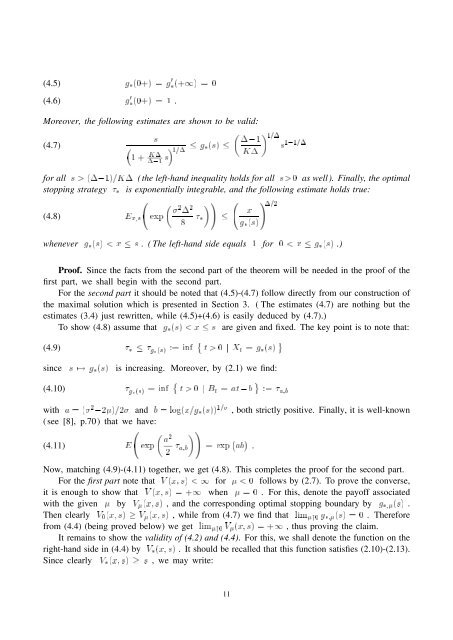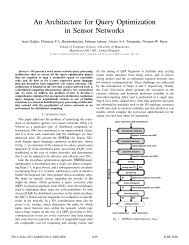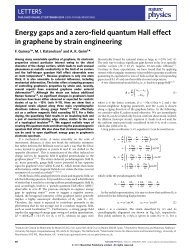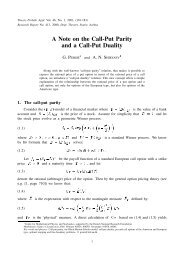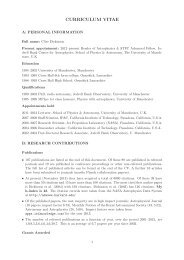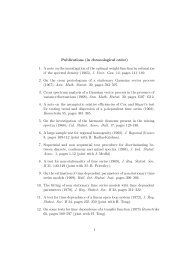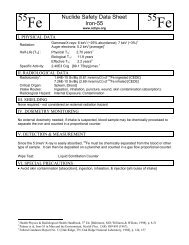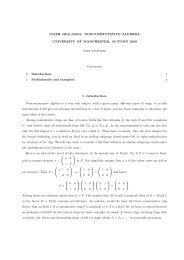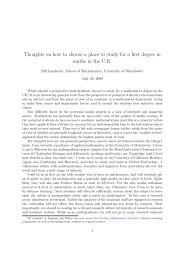inequality for geometric Brownian motion
inequality for geometric Brownian motion
inequality for geometric Brownian motion
Create successful ePaper yourself
Turn your PDF publications into a flip-book with our unique Google optimized e-Paper software.
(4.5) g3(0+) = g 0 3(+1) = 0(4.6) g 0 3(0+) = 1 .Moreover, the following estimates are shown to be valid:(4.7)s1 +101 K11=1 g 1013(s) s K11=1s 101=1<strong>for</strong> all s > (101)=K1 (the left-hand <strong>inequality</strong> holds <strong>for</strong> all s>0 as well). Finally, the optimalstopping strategy 3 is exponentially integrable, and the following estimate holds true:(4.8) E x;s exp 2 1 283! !1=2xg3(s)whenever g3(s) < x s . ( The left-hand side equals 1 <strong>for</strong> 0 < x g3(s) .)Proof. Since the facts from the second part of the theorem will be needed in the proof of thefirst part, we shall begin with the second part.For the second part it should be noted that (4.5)-(4.7) follow directly from our construction ofthe maximal solution which is presented in Section 3. ( The estimates (4.7) are nothing but theestimates (3.4) just rewritten, while (4.5)+(4.6) is easily deduced by (4.7).)To show (4.8) assume that g3(s) < x s are given and fixed. The key point is to note that:(4.9) 3 g 3(s) := inf8t > 0 j X t = g3(s)9since s 7! g3(s) is increasing. Moreover, by (2.1) we find:(4.10) g3(s) = inf8t > 0 j B t = at0b9:= a;bwith a = ( 2 02)=2 and b = log(x=g3(s)) 1= , both strictly positive. Finally, it is well-known(see [8], p.70) that we have:(4.11) E exp a22 a;b!= exp0 ab1.Now, matching (4.9)-(4.11) together, we get (4.8). This completes the proof <strong>for</strong> the second part.For the first part note that V (x; s) < 1 <strong>for</strong> < 0 follows by (2.7). To prove the converse,it is enough to show that V (x; s) = +1 when = 0 . For this, denote the payoff associatedwith the given by V (x; s) , and the corresponding optimal stopping boundary by g3;(s) .Then clearly V 0 (x; s) V (x; s) , while from (4.7) we find that lim "0 g3;(s) = 0 . There<strong>for</strong>efrom (4.4) (being proved below) we get lim "0 V (x; s) = +1 , thus proving the claim.It remains to show the validity of (4.2) and (4.4). For this, we shall denote the function on theright-hand side in (4.4) by V3(x; s) . It should be recalled that this function satisfies (2.10)-(2.13).Since clearly V3(x; s) s , we may write:11


